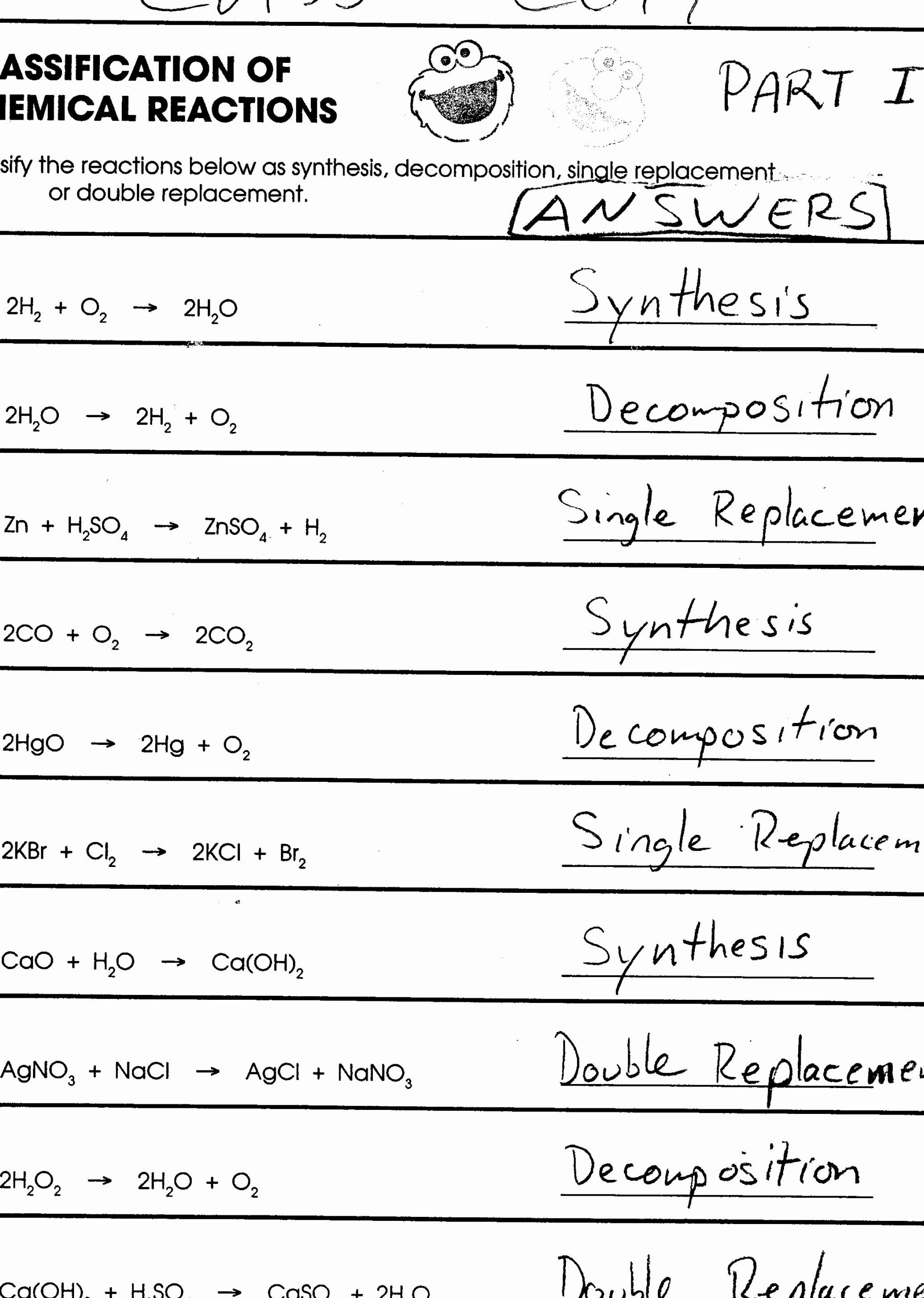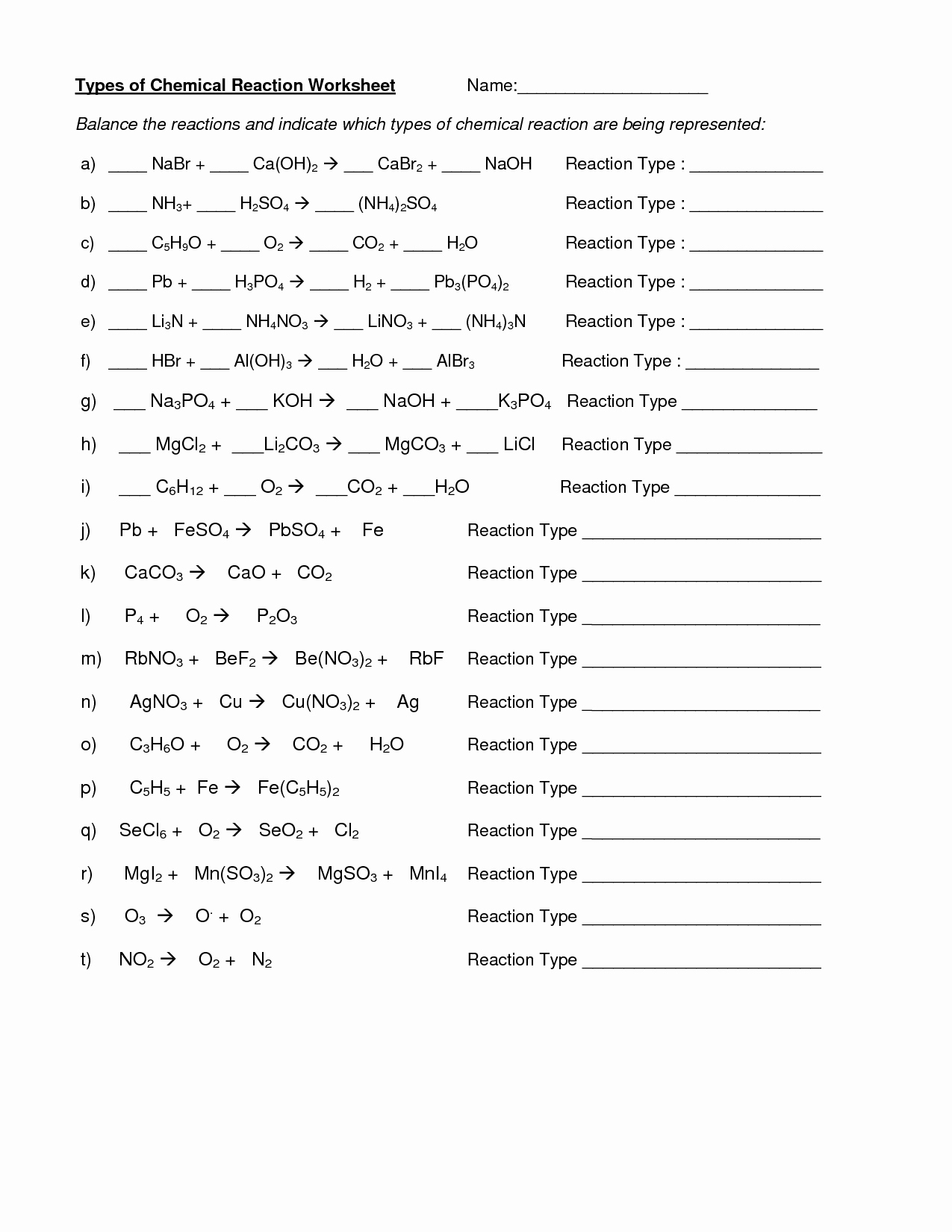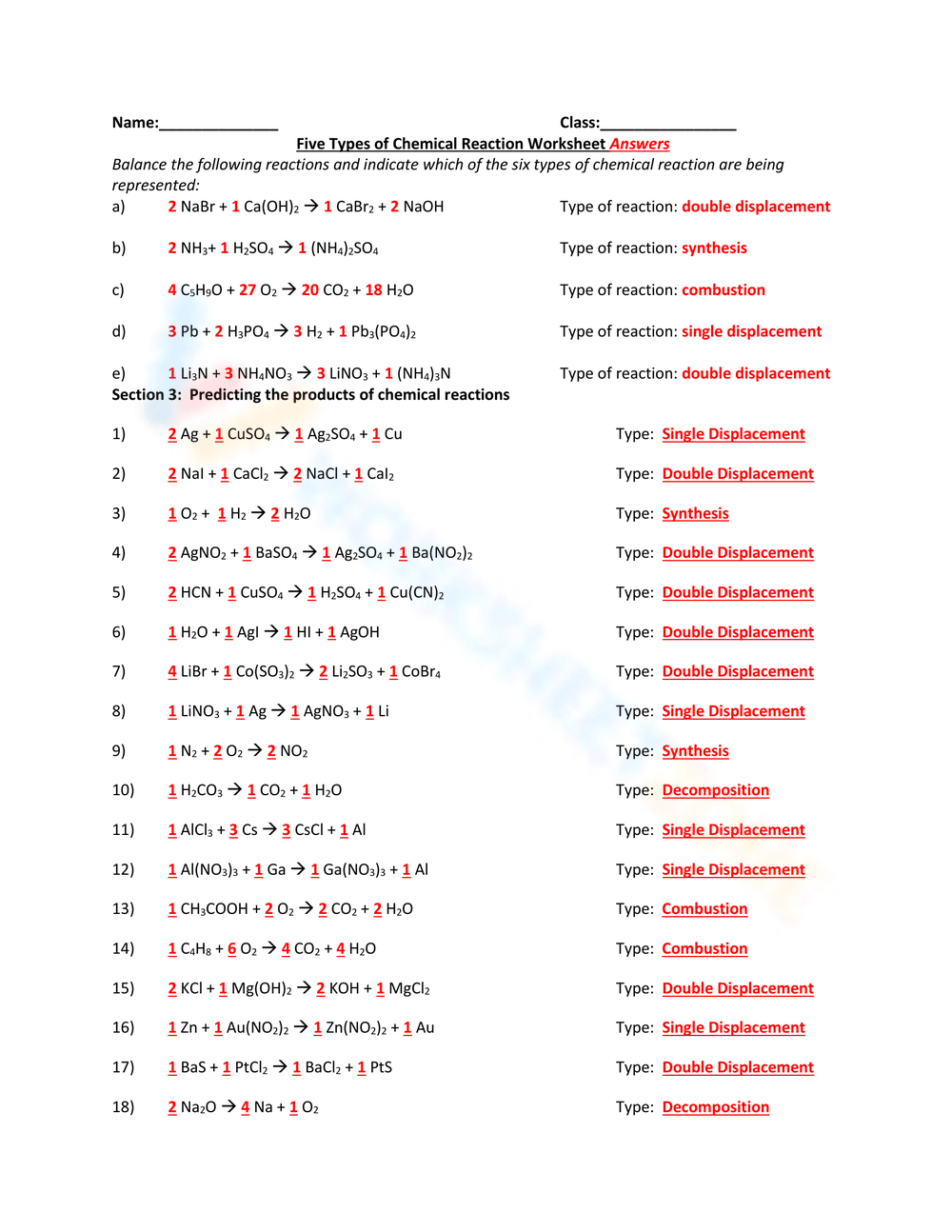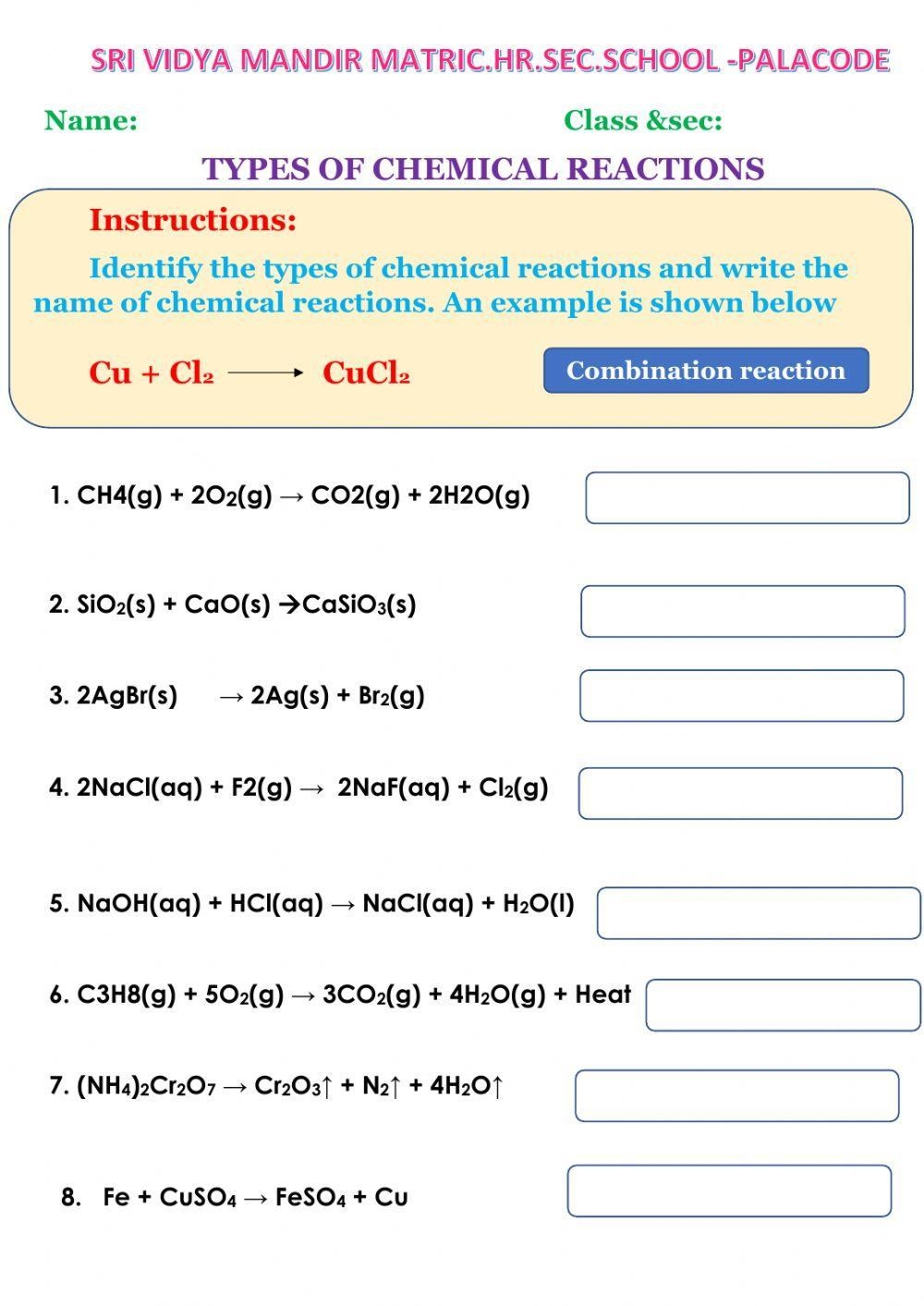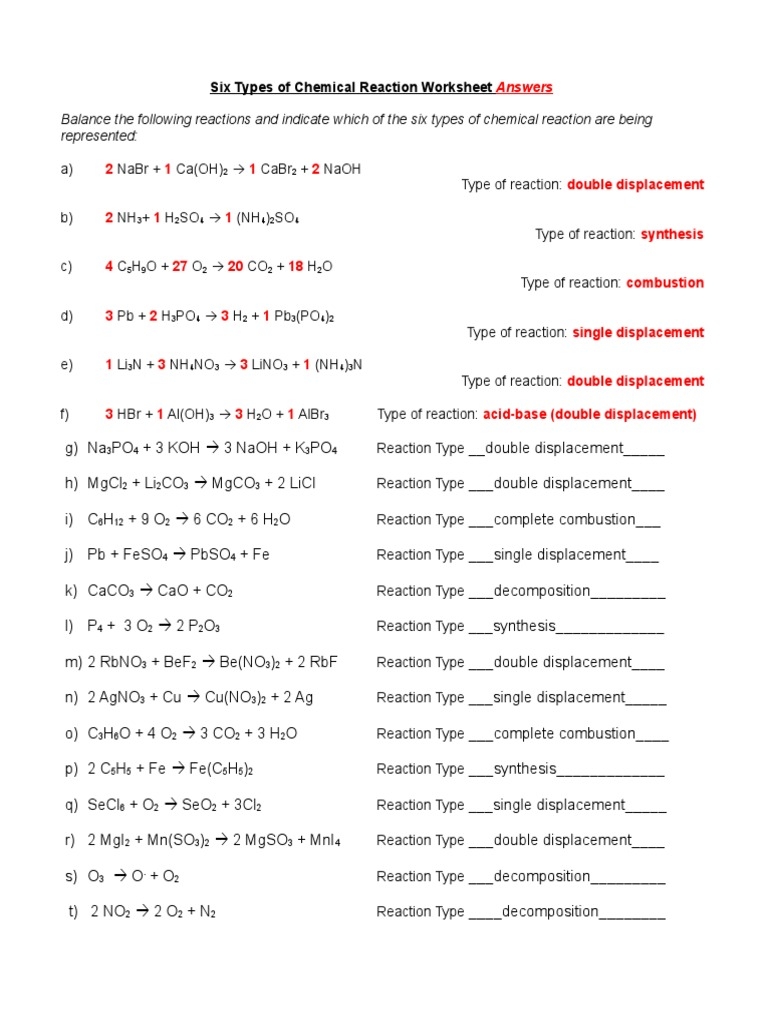Chemical reactions are an essential part of chemistry, as they involve the transformation of substances into new products through the breaking and forming of chemical bonds. To understand and practice these reactions, students often use worksheets to reinforce their knowledge and skills. These worksheets typically contain a series of questions that require students to balance equations, identify reactants and products, and predict the outcome of different reactions.
One common type of question found on a chemical reactions worksheet is balancing chemical equations. This involves ensuring that the number of atoms of each element on the reactant side is equal to the number of atoms on the product side. Balancing equations can be challenging for students, as it requires a good understanding of the laws of conservation of mass and the ability to manipulate coefficients to achieve balance.
Another type of question that may be included on a chemical reactions worksheet is predicting the products of a given reaction. This requires students to identify the reactants and the type of reaction taking place, such as synthesis, decomposition, single replacement, or double replacement. By understanding the types of reactions and the rules that govern them, students can accurately predict the products formed during a chemical reaction.
Students may also be asked to identify the type of reaction based on the reactants and products given in a chemical equation. This involves recognizing patterns and trends in reactions and being able to classify them accordingly. By practicing these skills on a worksheet, students can improve their ability to categorize and understand different types of chemical reactions.
In addition to these types of questions, chemical reactions worksheets may also include problems that require students to calculate quantities such as molarity, mass, or volume. These calculations involve using the stoichiometry of a reaction to determine the amount of a substance produced or consumed. By practicing these calculations on a worksheet, students can reinforce their understanding of stoichiometry and its applications in chemistry.
In conclusion, chemical reactions worksheets are valuable tools for students to practice and reinforce their understanding of the principles of chemistry. By working through a variety of questions that cover balancing equations, predicting products, identifying reaction types, and performing stoichiometric calculations, students can develop their skills and confidence in dealing with chemical reactions. These worksheets provide a structured and systematic way for students to apply their knowledge and problem-solving abilities, making them an essential resource for mastering the intricacies of chemical reactions.
